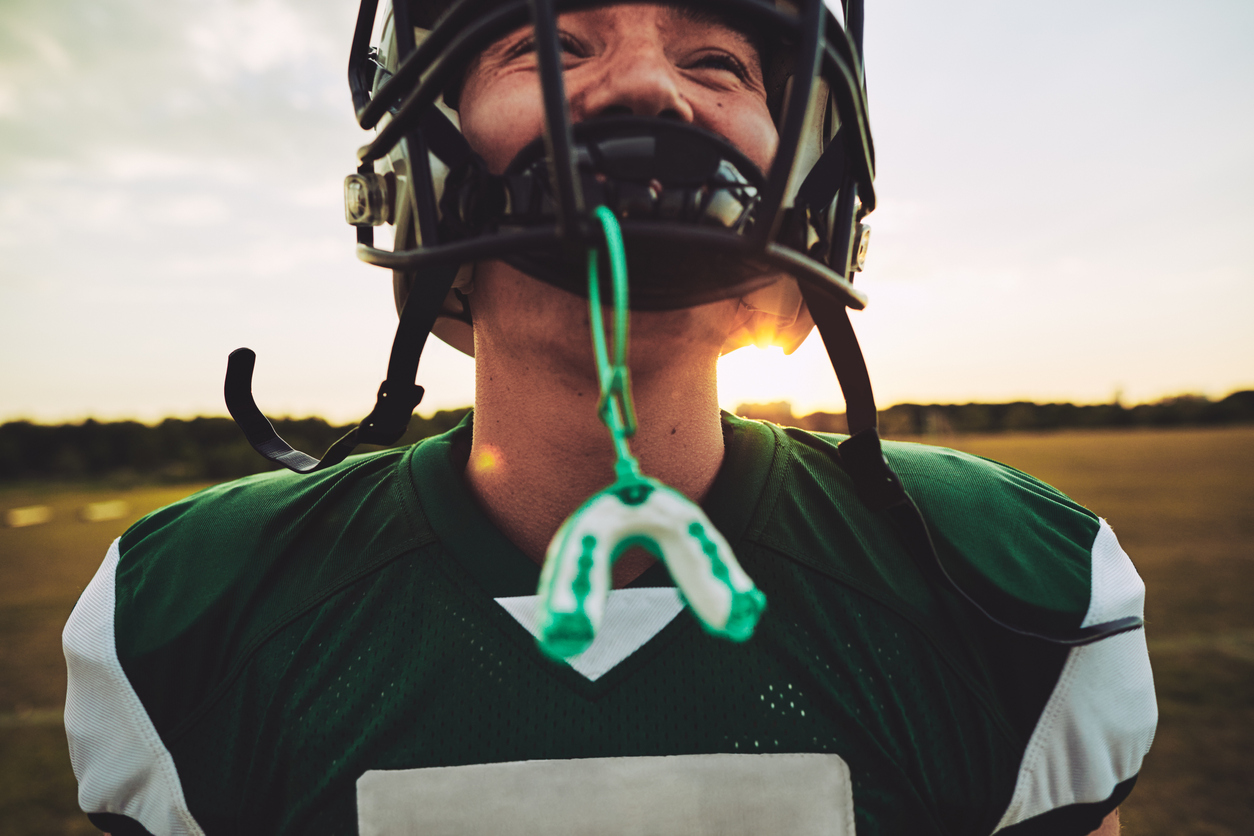The Importance of Wearing a Mouth Guard
If you have been following hockey or soccer you know how physical these games can be and injuries are commonplace. Dr. Berrios wants to remind parents, coaches, athletes and weekend warriors, to play it safe when playing sports. Always wear protective gear and most importantly do not forget to wear a mouth guard. You don’t want to lose your teeth in the process of winning the game.
A recent study by the American Association of Orthodontists found that 84% of children do not wear mouth guards while playing organized sports because they are not required to wear them. Mouth guards can be one of the least expensive pieces of protective equipment available. The American Academy of Pediatric Dentistry recommends a sports mouth guard for all youth competition, regardless of age.
A mouth guard reduces the risk of broken teeth and injuries to the soft tissues of the mouth. It holds teeth in place, while allowing for normal speech and breathing. Children wearing braces have a slightly higher risk of oral injuries, including mouth lacerations, if they are hit in the mouth by a ball or another player. So it is important that they wear a custom fitted mouth guard. In fact, just by wearing a properly fitted mouth guard, many accidents and traumatic injuries could be prevented. The American Dental Association estimates that mouth guards prevent more than 200,000 oral injuries each year.
Children and Adults who play contact sports or non-contact sports that might pose a risk of injury to the teeth or mouth should wear a mouth guard.
The American Dental Association recommends mouth guards for the following sports:
- Acrobatics
- Basketball
- Boxing
- Discus Throwing
- Field Hockey
- Football
- Gymnastics
- Handball
- Ice Hockey
- Lacrosse
- Martial Arts
- Racquetball
- Rugby
- Shot Putting
- Skateboarding
- Skiing
- Skydiving
- Soccer
- Squash
- Surfing
- Volleyball
- Water Polo
- Weight Lifting
- Wrestling
There are 3 main types of mouth guards:
- Stock. You can purchase a stock type mouth guard a sporting good store. They come in three sizes: small, medium and large. Some users complain that they are too wide in the back, making it harder to talk.
- Boil and Bite. A semi-custom fit can be made using a “boil and bite” model mouth guard. Hot water is used to soften the plastic and your child then bites into the guard, molding it to his or her teeth. This type of mouth guard is not recommended for a person who wears braces as it will get stuck on the braces and may pull the braces off the teeth with the mouth guard is removed.
- Custom. Custom mouth guards are the best option if your child plays a number of sports each year or plays sports with continuous activity, like basketball or soccer, and is advised for a child with braces so that the mouth guard won’t interfere with treatment. Once a child reaches age 13 or 14, a custom fitted mouth guard should generally continue to fit for as long as needed.
Tips for Caring for your Mouth Guard:
- Before and after using it, rinse it with cold water or antiseptic mouth rinse, or clean it with a toothbrush and toothpaste.
- When you’re not using it, place the mouth guard in a firm, perforated container to protect it and to permit air circulation.
- Have regular dental checkups and bring your mouth guard along so the dentist can make sure it is still in good condition.
If your child plays organized sports and you would like a recommendation on the best mouth guard for their particular activity, please call Dr. Berrios at (818) 718-9280. He can make a custom fitted mouth guard to protect your child’s teeth as they play their favorite sport.


